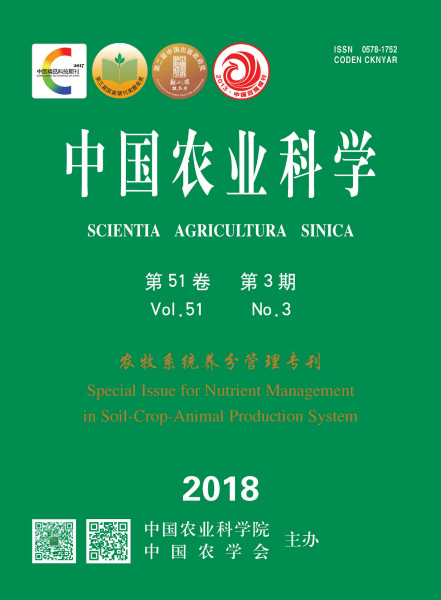-
Nitrogen Flow and Environmental Effects of Crop-Livestock System in Typical Area of North China Plain-A Case Study in Hebei Province
- TONG BingXin, ZHANG HuaFang, GAO XiaoXian, HOU Yong, MA WenQi
-
Scientia Agricultura Sinica. 2018, 51(3):
442-455.
doi:10.3864/j.issn.0578-1752.2018.03.005
-
 Abstract
(
604 )
Abstract
(
604 )
 HTML
(
8 )
HTML
(
8 )
 PDF (1304KB)
(
535
)
PDF (1304KB)
(
535
)
 Save
Save
-
References |
Related Articles |
Metrics
【Objective】The objective of this study is to evaluate the characteristics of nitrogen (N) flow and environmental effects in crop-livestock system in Hebei Province, North China Plain at regional level for the period of 1980-2015, analyze the nitrogen cycle use and recycling efficiency and the degree of combination of agriculture and animal husbandry, discuss the improved management strategies of nitrogen, and to provide a basis for the sustainable development of crop-livestock system in China. 【Method】Taking the crop-livestock system in Hebei province as the research boundary, based on the material flow analysis (MFA) method, the input-output balance, recycling and loss of N in the crop system, livestock system and crop-livestock system of Hebei Province were analyzed from the year 1980 to 2015, supplemented with the data from national and regional statistics, literature and farmers’ surveys. N use efficiency, surplus and recycling ratio were considered as the indexes to analyze N flow characteristics and environmental effects. The N input items of crop-livestock system mainly included chemical fertilizer, biological nitrogen fixation, deposition, irrigation, human feces and urine reused as fertilizer and imported feed; the N output items mainly included the locally consumed and exported main product and by-product of crop and livestock systems, N lost to water body and air; the internal N recycling items mainly included by-product of crop system returned to field, main product and by-product of crop system as local animal feed, and livestock manure returned to field. 【Result】In the crop system, the total N input and the amount of N in harvested crops increased by 1.9 and 1.5 times from 1980 to 2015. The N surplus and loss from crop system increased by 1.7 and 1.9 times, respectively, leading to the decrease in N use efficiency (from 47.2% to 41.4%). Compared with the organic fertilizer N input, the chemical N fertilizer input accounted for more than 60% of the total N input in farmland, and in recent years it was close to 70%. The N balance of farmland varied greatly among regions. In terms of N input, Handan and Tangshang were higher (>600 kg·hm-2), and Chengde was the lowest (<200 kg·hm-2). In terms of N surplus, Tangshang was the highest (267.8 kg·hm-2), while Hengshui was the lowest (51.6 kg·hm-2). The amount of N input in livestock system also increased significantly, reaching a maximum on 2005, which was 7.7 times higher than that in 1980. The amount of N in animal products and animal excretion increased rapidly. Especially the N production of feces and urine increased from 21.8×104 t to 115.3×104 t. The N produced by manure was the highest in Handan (377.3 kg·hm-2), and Hengshui was the lowest production (122.6 kg·hm-2). The N dependence rate of exogenous feed increased from 60.5% to 72.7%, the N return rate of livestock feces and urine decreased from 70.4% to 30.2%, but the N utilization efficiency of livestock system increased from 6.4% to 16.3%. In the crop-livestock system, the 36-year accumulated N input was as high as 9 038.9×104 t. The chemical N fertilizer input accounted for about 55.7% of the total N input, and N input via imported feed occupied 33.1% of total N input. For the total accumulated N output, the N output via crop and animal products (2 537.4×104 t), accounting for 28.1% of the total input N. The 36-year accumulated N loss into air and water was 4 061.2×104 t, accounting for 44.9% of the total N input. 【Conclusion】 From 1980 to 2015, the amount of N input in crop-livestock system in Hebei Province increased significantly, N enrichment and environmental emissions were serious, N use efficiency was low, and there were great differences in N balance per unit area in different regions. The N cycle between crop production and livestock production is seriously disjointed. Therefore, we should make full use of local feed resources, improve the return rate of organic fertilizer, and take the road of combination of agriculture and animal husbandry, so as to reduce the cost of “high input and low efficiency” caused by “separation of agriculture and animal husbandry” and promote sustainable development of agriculture and animal husbandry.









